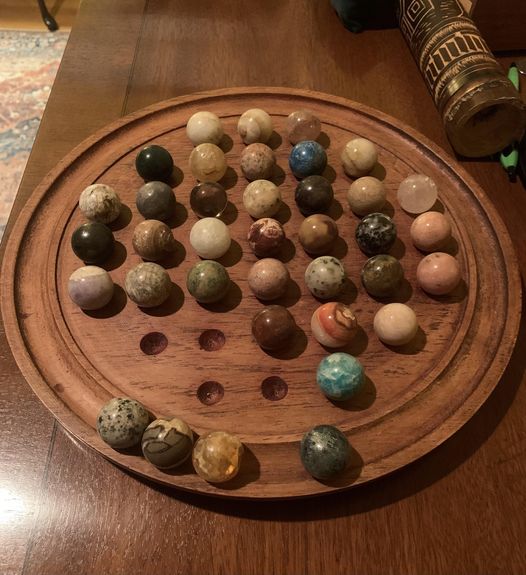Peg Solitaire: A Classic Brain Teaser
Peg Solitaire, also known as Marble Solitaire, is a classic single-player game that has challenged minds for centuries. The objective is simple yet intriguing: reduce the board to a single marble through strategic moves and jumps. Let’s delve into the fascinating details of this game, its rules, variations, and strategies.
Gameplay and Objective
The game typically features a board filled with pegs or marbles, with one empty space. The goal is to eliminate marbles by jumping one over another, similar to checkers, into an empty hole. The marble that was jumped over is then removed from the board. You continue making moves until no more jumps are possible or only one marble remains. Achieving the latter signifies a victory, marking the player as a master strategist.
Game Setup
A standard Peg Solitaire board consists of a cross-shaped arrangement, often with 33 holes (in the English version) or 37 holes (in the European version). The central hole is typically empty at the start:
Rules of Play
- Jumping Moves: You can only move a marble by jumping it over an adjacent marble into an empty space directly on the other side. The jump can be horizontal or vertical, but not diagonal.
- Elimination: The marble that is jumped over is removed from the board.
- Objective: Continue jumping and removing marbles until you are left with a single marble in the center of the board. This is the traditional winning condition, though variations may exist depending on the board layout.
Variations
Peg Solitaire has several variations based on board shape and size. Here are a few notable ones:
- English Board: The most common 33-hole board shaped like a cross.
- European Board: A slightly larger board with 37 holes and additional diagonal rows.
- Triangle Board: Often used in Chinese Checkers, this version has a triangular layout.
- Diamond or Asymmetrical Boards: Custom boards where the layout and number of marbles differ, adding unique challenges.
Strategies for Success
- Center Focus: Start by clearing the outer marbles and focus on bringing remaining marbles towards the center.
- Plan Ahead: Consider the long-term effects of each move. Aim to set up chain reactions where possible.
- Avoid Isolating Marbles: Try not to leave marbles stranded in positions where they can’t be jumped over.
- Symmetrical Approach: Often, solving one side symmetrically helps balance the board and offers more move opportunities.
Historical Background
The origins of Peg Solitaire are somewhat mysterious, but it likely dates back to the 17th century in Europe. The game’s enduring popularity is a testament to its challenging nature and the intellectual satisfaction it provides. Whether you’re playing on a digital app, a classic wooden board, or a peg set at a cafe, Peg Solitaire continues to be a beloved game for puzzle enthusiasts worldwide.
Digital Adaptations
In today’s digital age, Peg Solitaire is available as a mobile app and online game, making it accessible to new generations. These digital versions often include multiple board layouts and difficulty levels, providing endless entertainment and brain exercise.
Peg Solitaire offers a delightful combination of simplicity and depth, making it a perfect game for those who enjoy strategic puzzles. Whether you’re a casual player or a serious strategist, this timeless game challenges you to think ahead and refine your problem-solving skills. Give it a try and see if you can master the art of leaving just one marble standing!

Leave a Reply